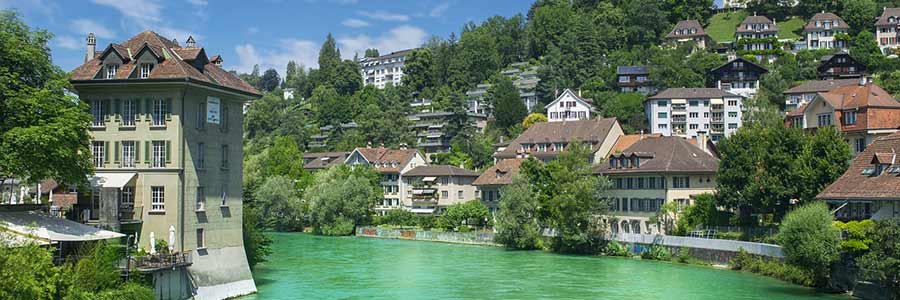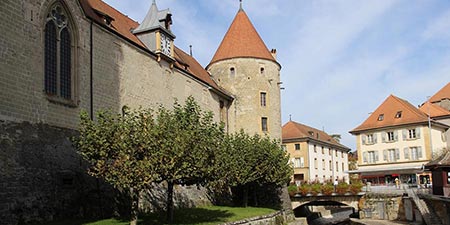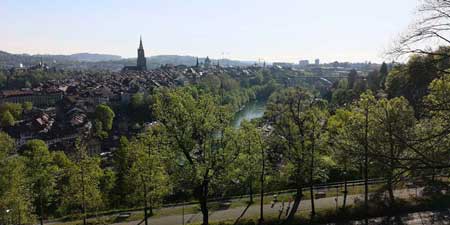Avenches - Through old town from Murtensee Camping
- Written by Portal Editor
- Category: Bern
- Hits: 32607

It is only a few kilometers from the campsite at Murtensee to the Swiss town of Avenches, which is done by bike within a few minutes.

The medieval atmosphere of the city with its numerous fountains, sandstone facades, alleys and historic towers is unique in Bern. The most beautiful view of the old town surrounded by the Aare is the elevated rose garden above the Bären Park or the platform of the 101-meter- high cathedral tower.
Bern has many museums spread throughout the city. In the center on Hodlerstrasse is the art museum, which opened in 1879 and houses works from eight centuries. In the immediate vicinity is the “Progr”, the first high school and later Progymnasium in Bern, which today serves as an exhibition and event location.
In the Kirchenfeld near Helvetiaplatz are the Historical Museum, originally planned as a state museum, which, in addition to its collection, also shows temporary exhibitions and set up the Einstein Museum in 2005, the Swiss Alpine Museum and the Kunsthalle, which shows several individual and group exhibitions dedicated to contemporary art every year. Not far away are the Museum of Communication and the Natural History Museum, which belongs to the Burgergemeinde, with its diorama show.
In 2015, cycling in Bern accounted for 15% of the choice of means of transport, measured as the share of journeys as the main means of transport. The city is planning to create a star-shaped network of main cycling routes that will connect the city centre with the agglomeration.

It is only a few kilometers from the campsite at Murtensee to the Swiss town of Avenches, which is done by bike within a few minutes.

At the time of the Roman Empire, Avenches, at the time called Aventicum, was the most important city on Swiss soil next to the trade route from the Rhone valley via Augusta Raurica to Germania.

During our several-day stay at a campsite near Avenches and after the strenuous camping fair in Bern, we also circled Lake Neuchâtel and came across the primeval menhirs, which we have already reported on.

The rose garden above the old town is probably one of the most beautiful parks in the city of Bern which offers a unique view of the roof landscape of the historic old town, the cathedral and the Aare river.

The Swiss town of Yverdon today stretches on the alluvial plain at the mouth of the river Zihl in Lake Neuchâtel at 435 m above sea level, about 30 km north of the canton's capital Lausanne.